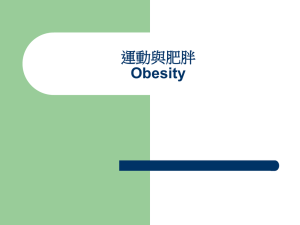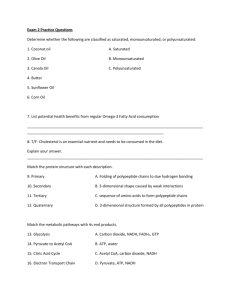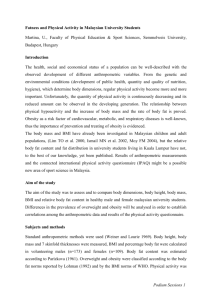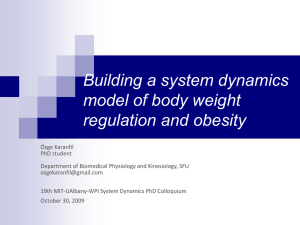Designing Fat: The Construction of a Global Obesity Epidemic
advertisement
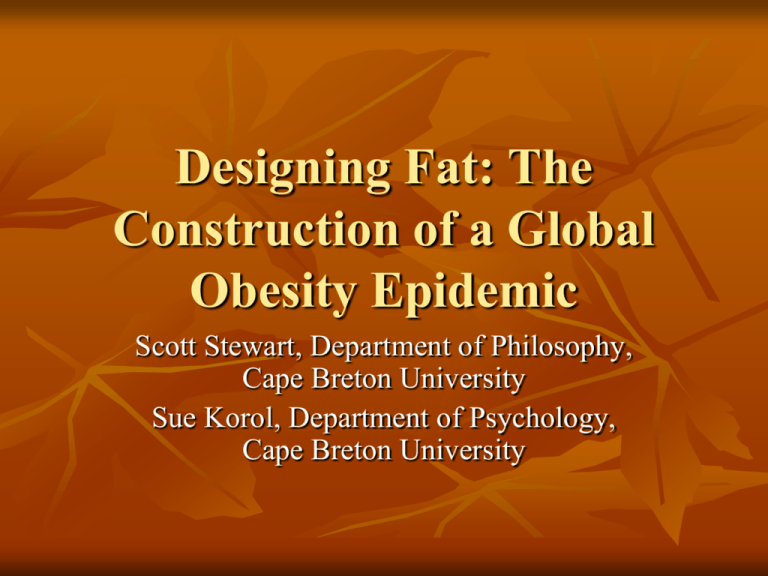
Designing Fat: The Construction of a Global Obesity Epidemic Scott Stewart, Department of Philosophy, Cape Breton University Sue Korol, Department of Psychology, Cape Breton University Fat and Getting Fatter? Overweight and obesity has increased by 31% between 1976-1991. Increased 24% between 1994-2000. CDC in 1999 said 280,000 US deaths due to obesity. Mokdad (2004) claims 400,000 UD deaths per year. Desire to be thin 90% of women want to lose weight. 55% Americans on a diet. $30-40 billion per year spent on weight loss industry. 90% of formerly obese people would rather be blind or have a leg amputated than be fat again. Hacking and looping effects Indifferent kinds: not changed by classification. Interactive kinds: are changed by classification. Homosexuality as an interactive kind. Fat as an interactive kind. Outline of paper The obesity epidemic is overblown. People cannot sustain weight loss. Obesity’s connection to disease overblown. Re-classifying fatness. Fat and fit: looping from above. Fat and proud: looping from below. Calculating obesity: Height-weight tables 1912 insurance industry table includes age. 5’4” woman in 20s average weight 126lbs. In 30s average weight is 132lbs. In 40s, 140lbs. In 50s and 60s, 145lbs. 1942-43 Metlife tables: average becomes ideal, no age adjustment. Calculating obesity: Height-weight tables 1959 insurance industry tables. Ideal weight becomes desirable weight. 5’4” woman of any age with slight build should weigh between 108-116lbs. BMI is calculated by (weight in lbs x 703) ÷ (square of height in inches). BMI is just another height-weight table. Set Point theory and big Pharma Individual weight remains stable only within a 20lb range. Good and bad news for diet industry. They can’t deliver what they promise. Constantly returning customers. Fen-Phen and PR. Only 3% better than placebo. Collusion between Wyeth and academics. Is fat really deadly? Health industry links obesity to a number of chronic illnesses. A closer look. Hypertension: 85% of time fat is causally unrelated. Atherosclerosis: even morbidly obese people are no more likely to have it. Is fat really deadly? Type II diabetes. Cured irrespective of weight loss (diet and exercise). Cross-cultural comparisons. India has highest rate of diabetes at 12% while only 2% obesity. Samoa’s rate of obesity is very high (75%) while diabetes prevalence of 9%. China and urban vs rural. Fat and fit: looping from above Some experts believe that overweight and obesity do not make people sick. Lifestyle: Consumption of unhealthy foods and lack of exercise. Fat people can be fitter than thin people. 5’10”, 138lb man twice as likely to die than 175lb man. Middle aged 5’5” woman has half risk of death at 146lbs than at 115lbs. Psychosocial dangers of a weightobsessed culture Depression and obesity are positively correlated and reciprocal. Relationship between weight and stress varies depending on dieting history; yoyo dieting. Re-focus on other non-weight factors: urbanization, stress, exercise, bad food, social cohesion. Fat and proud: looping from below Health, morality or aesthetics? Sloth, gluttony and greed. Fat and ugly. Harassment. Fat acceptance. Gay pride. De-medicalization. Disability movement. Conclusion Ancel Keys study. Making normal weight people lose weight made them food obsessed. Subjects’ metabolism slowed by 40%, body temperatures and heart rates dropped. Restoring positive relationships with food.

